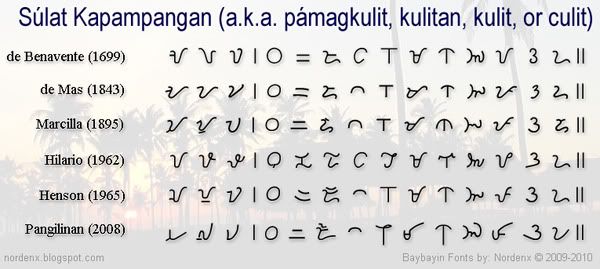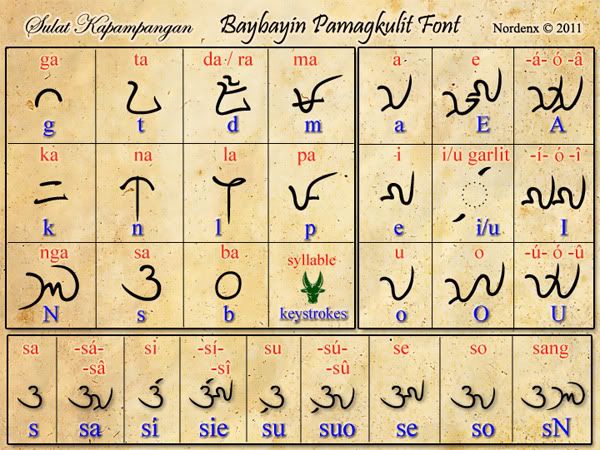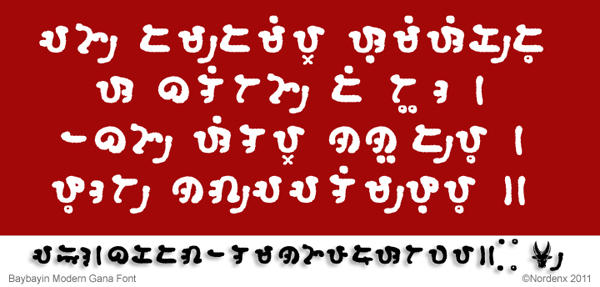As I release western style baybayin fonts, I begin to wonder about how the community will receive them.
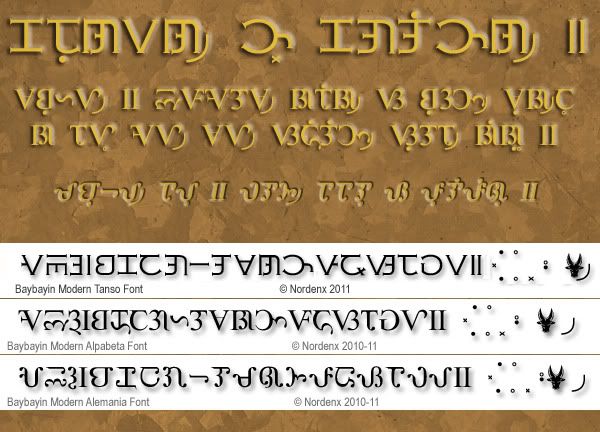
Over the years, I received numerous emails and private messages regarding my fonts and my efforts in standardizing the script for typography, uniformity of stokes, ease of legibility, ease of access, and synchronization with modern Filipino
orthography. A lot of these correspondences are positive and very encouraging. However there a a few that are not. It seems that I have not made my intentions clear. People sometimes see the adjective "modern" in the name of my fonts and they immediately think "modified" which some view with the same disdain they feel when they think that something is a product of "colonial mentality".
Modern ≠ Modified
Ra Rah! To tell you the truth, the only glyph I consider "modified" in my fonts is my ᜍ
Ra character. But even ᜍ
Ra as an alternative character is basically still an
embellished "traditional" ᜇ
Da. Maybe that's why folks accept it; I'm just pleasantly pleased that it has been well received by many. In that light, my other "alternative" characters are designed in the same fashion; an embellished ᜐ
Sa for
Za, an embellished ᜁ
I for
E, and an embellished ᜂ
U for
O.
Ba Va Boom! Some folks are confused by my other characters which are actually NOT embellished versions of the another (Filipino) phoneme equivalent but are actually true (earlier recorded) representation of the same character; O
Ba is the same ᜊ
Ba but I assigned the round O
Ba to the 'V' key because it more resembles the phoneme matching characters in related family of Indic & South East Asian scripts.
Oye Pa Fa! The traditional F-shaped ᜉ
Pa is still the same as the old
Kapampangan closed-loop P-shaped
Pa so I assigned the F-shaped one to the 'F' key and the P-shaped one to the 'P' key [shape-wise it makes sense to me] - however, the old closed-loop
Ya is very much similar to the old closed-loop
Pa, so I chose to include & assign a current but still traditional loop-less ᜌ
Ya to the 'Y' key.
e, ang kulit o! People fail to see that even if I propose and include these alternatives, they are available to them
only if they wish to use them. If you like the style of a font and want to write in the old traditional way - you can do so. It's there for you, it's free, it's easy! Just because I included the hollow ○
kudlit mark for mid vowels e and o doesn't mean you have to use them or even disregard the whole font just because you think that the solid ●
kudlit mark is the proper mark (I'll get to you 'mix & dash' supporters later). Same goes to the
virama and
pamudpod (vowel cancellation marks), I included them because they are culturally & historically relevant. Just because they are introduced by foreigners doesn't mean that they are linguistically wrong.
Virama and
pamudpod marks are valid methods of vowel cancellation used by
baybayin's parent Indic & relative Malay/Austronesian scripts. The
virama method is very old but still very effective. Heck, it was introduced to baybayin by the Spanish scholars for the very same reason I saw it fit for use - to adapt with changing times.
Adobo at pandesal... More than 300 years of Hispanic and western influence has infused and change our culture and language. Good or bad, these influences have become uniquely and traditionally ours. The
krus kudlit (cross-shaped
virama) was introduced in the 16th century to adapt
baybayin script to
Spanish orthography, and despite the native population's adamant reluctance to use it for everyday writing, they conceded to use it when writing Spanish words. After several centuries, like
adobo & pandesal, our language & culture adapted and changed, but
baybayin never did. Could the early practitioner's staunch tradition and resistance to change have contributed to
baybayin's disuse? The
krus kudlit is as old as the introduction of the word
adobo and the bread
pandesal to Filipinos and while the food stuff became "traditional" Filipino fare, the cross-shaped mark became a hated symbol of Spanish oppression - a funny thing coming from a country of devout Catholics.
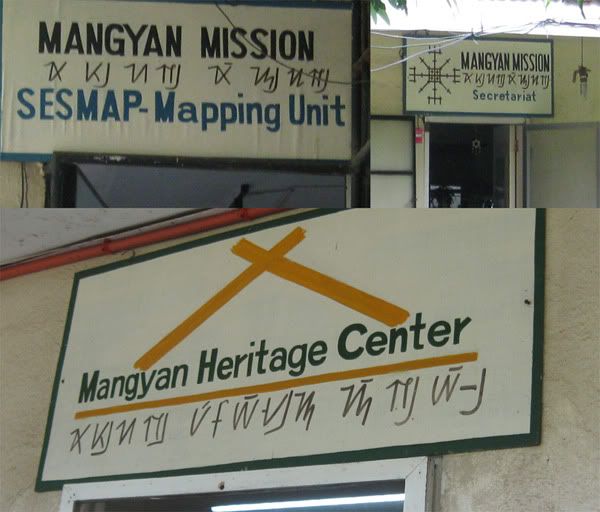
pud! galoryus pud! What's fresh and what's cooking? Being from
Mindoro Island, the home of the
Mangyan tribes, I have been interested with the
pamudpod; their version of a
virama. The
pamudpod mark and a
Ra character were introduced several decades ago by Dutch anthropologist
Antoon Postma, who has married into and lives among the
Hanunóo, a
Mangyan sub-tribe in Mindoro, Philippines. What interests me is how readily the Mangyan accepted and implimented this marks & method of canceling inherent vowels. As you can see from the photo-collage above from my visit to Mindoro last year (2010), it is now commonly used everyday by the tribes. All
Mangyan books, souvenir nicknacks, shirts, handicrafts and artifacts I encountered back home bears the newly introduced mark & character. This is especially true when a
Mangyan language composition is mixed with Tagalog, and foreign words. This is another reason why I included a
Ra and
pamudpod mark in my fonts.
BOTTOM LINE:
Just because my fonts have the adjective 'modern' attached to its name and the characters have been stylized, it doesn't mean that they can not be used in the traditional way of
baybayin. Each character in all my fonts retain the traditional character form & shapes.
I also can't stress enough that you learn both the traditional method & Spanish "reformed" method of writing
baybayin and educate yourself about Filipino languages and orthography.
Paul Morrow's site is the best place to start:
Sarisari etc.
← And don't forget to check out the other links listed on the sidebar of this blog.








